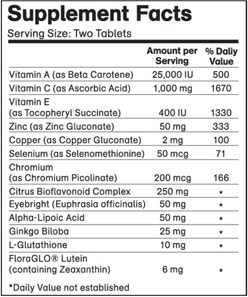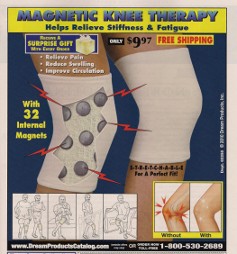Hearing Our Seriously Depressed Adolescents and The Truth About 'Troubled' Teens
- Details
- Written by Dan L. Edmunds, Ed.D., B.C.S.A. Dan L. Edmunds, Ed.D., B.C.S.A.
- Category: Reports Reports
- Published: June 02, 2009 June 02, 2009
 The distressed adolescent often has feelings of abandonment, emotional detachment, withdrawal, and isolation. These children begin to develop an intense anger directed towards the adult society that they feel has hurt them and does not understand them. Parents need to learn how to build relationships with these children, and this can be accomplished through a process of emotional coaching, of allowing the child to express their feelings without judgment, while providing clear guidance, limits, and expectations. It is often inconsistency and a lack of clear guidance from parents that furthers the struggles for these children, who then begin to seek guidance from misinformed peers.
The distressed adolescent often has feelings of abandonment, emotional detachment, withdrawal, and isolation. These children begin to develop an intense anger directed towards the adult society that they feel has hurt them and does not understand them. Parents need to learn how to build relationships with these children, and this can be accomplished through a process of emotional coaching, of allowing the child to express their feelings without judgment, while providing clear guidance, limits, and expectations. It is often inconsistency and a lack of clear guidance from parents that furthers the struggles for these children, who then begin to seek guidance from misinformed peers.
Fed Up! Movie Trailer
- Details
- Written by Thomas Corriher Thomas Corriher
- Category: Reports Reports
- Published: June 02, 2009 June 02, 2009
We recently discovered Fed Up!, a documentary which focuses on the topic of genetically engineered foods. The movie uses archival footage and interviews to explore the changes in food production, how the Biotech Revolution took place, and it shows the influence of big industry on our food choices. The archival footage will be fascinating to many; showing the battle over genetically modified food labeling, the inevitable contamination of our entire food supply through genetically engineered pollens, how they are wiping-out the butterflies and honeybees, and how the great majority of the first pesticides are now illegal — but they remain for decades in farm soils.
There was no trailer available for this movie, so we made one ourselves. We strongly recommend that you watch the entire movie. It is only an hour long, and it is very informative. The movie was released under a Creative Commons license, so it should be freely and legally available for download from archive.org and through the bittorrent network.
Dishonest Dietary Supplement Labels and Serving Sizes
- Details
- Written by Sarah C. Corriher Sarah C. Corriher
- Category: Reports Reports
- Published: June 01, 2010 June 01, 2010
 People are often deceived by dietary supplement labels. These labels are intentionally deceptive, and frequently imply that they contain far more of a given substance than they actually do. Pictured right is a standard label for a dietary supplement.
People are often deceived by dietary supplement labels. These labels are intentionally deceptive, and frequently imply that they contain far more of a given substance than they actually do. Pictured right is a standard label for a dietary supplement.
As intended, people easily come to the false conclusion that these pills contain 1 gram (1000 mg.) of vitamin C, but that would be wrong. Always notice the serving size. In this example, the serving size is two tablets, which means that the nutrient information shown is what you would obtain from taking two pills at a time. There's actually only 500 mg. of vitamin C in each tablet. This may not seem particularly disturbing, until one realizes that other companies routinely change the serving sizes to be up to 6 pills. All of their nutrient information would need to be divided by six to get an approximate amount for each ingredient. Unscrupulous supplement companies rely on the fact that most people never notice the serving sizes, and that their customers will assume that they are getting exactly what the nutrient label says for each pill. Some of the more honest supplement companies have the serving size listed as one pill, which is exactly how it should be.
Alternative Medicine Fraud: Magnet Therapy
- Details
- Written by Thomas Corriher Thomas Corriher
- Category: Reports Reports
- Published: May 28, 2010 May 28, 2010
 Magnets are becoming popularized as a method for treating swelling and joint issues, with magnetic therapy growing to a billion dollar business internationally. This is due to massive marketing schemes. Magnet therapy advertisements plagued the June issue of Carolina Country, a free magazine that is distributed by the utility company, Energy United. The magnets were embedded into clothing, which allegedly relieves stiffness and fatigue. The product was essentially thick spandex underwear with embedded magnets. The manufacturer sells a large line of magnet-based "therapies", and they hook their victims using products like the one described. That particular entry-level product was one of the cheaper ones ($9.97) that was merely designed to reel-in gullible people for future marketing.
Magnets are becoming popularized as a method for treating swelling and joint issues, with magnetic therapy growing to a billion dollar business internationally. This is due to massive marketing schemes. Magnet therapy advertisements plagued the June issue of Carolina Country, a free magazine that is distributed by the utility company, Energy United. The magnets were embedded into clothing, which allegedly relieves stiffness and fatigue. The product was essentially thick spandex underwear with embedded magnets. The manufacturer sells a large line of magnet-based "therapies", and they hook their victims using products like the one described. That particular entry-level product was one of the cheaper ones ($9.97) that was merely designed to reel-in gullible people for future marketing.
Special Investigative Report: L-tryptophan, Lactic Acid, Prozac and Naturally Treating Depression
- Details
- Written by Sarah C. Corriher Sarah C. Corriher
- Category: Reports Reports
- Published: May 27, 2010 May 27, 2010
L-tryptophan is an essential amino acid that is found in many foods. It cannot be produced by the body itself, so it must be gained through a healthy diet, or through supplementation. It is the compound inside turkey that causes drowsiness, and turkey is the greatest natural source for it. L-tryptophan was a very common dietary supplement before being blocked for a year by the F.D.A. in 1989. It is used as a natural and holistic treatment for depression, and as a sleep aid.
Quick Tip: How To Eliminate A Sore Throat
- Details
- Written by Sarah C. Corriher Sarah C. Corriher
- Category: Reports Reports
- Published: May 24, 2010 May 24, 2010
Whether people are suffering with the common cold or bronchitis, a sore throat is often one of the first symptoms. There are very few useful pharmaceutical options, so even doctors frequently recommend home remedies. We have found a cure for some cases of sore throat. It can dramatically reduce pain in a matter of minutes.
Mix one teaspoon of powdered cayenne pepper with one teaspoon of sea salt, in an 8 ounce glass. Fill with water and mix well. Gargle with this formula, and then refrigerate it. You should re-use it whenever the throat becomes painful again. It does not need to be warmed. It will break-up the bacterial coating in the throat, so expect to be profusely spitting for a few minutes afterward. Discard it after a day, and remake it as necessary.
Quick Tip: How To Remedy Food Poisoning
- Details
- Written by Thomas Corriher Thomas Corriher
- Category: Reports Reports
- Published: May 21, 2010 May 21, 2010
 Those who eat at restaurants on a regular basis are certain to occasionally experience food poisoning. The symptoms can appear within three to four hours. They include diarrhea, vomiting, headaches, and fever. The symptoms can be violently extreme. An individual will typically suffer with food poisoning for 24 to 36 grueling hours. Most of the so-called "stomach bugs" are actually minor cases of food poisoning, but they are rarely recognized as such. Food poisoning is a much more common problem than most people realize.
Those who eat at restaurants on a regular basis are certain to occasionally experience food poisoning. The symptoms can appear within three to four hours. They include diarrhea, vomiting, headaches, and fever. The symptoms can be violently extreme. An individual will typically suffer with food poisoning for 24 to 36 grueling hours. Most of the so-called "stomach bugs" are actually minor cases of food poisoning, but they are rarely recognized as such. Food poisoning is a much more common problem than most people realize.
Staphylococcus aureus is a very common food poisoning bacteria. It is killed by normal cooking, but it is frequently found in hand-made products that are left at room temperature for a long time, such as potato salad or sandwich spread. Salmonella is the most infamous food poisoning agent, but it is easily destroyed in temperatures above 150 degrees Fahrenheit. The presence of listeria in meats has resulted in a large number of meat recalls. It breeds in the unhygienic conditions of factory farms. It causes flu-like symptoms, and it has the unusual trait of becoming contagious in an infected individual. It can be deadly to children and people who have weakened immune systems. Botulism toxins are caused by the clostridium botulinum bacteria. Botulism poisoning is rare. It is only responsible for 1 in 400 cases of food poisoning, but it is more likely to result in death. Cl. botulinum can exist as a heat-resistant spore, and may grow to produce a neurotoxin in under-cooked, home-canned foods. Incredibly, botulinum poison therapy ("Botox") is an approved medical therapy, which is used to temporarily hide wrinkles through its central nervous system toxicant effect, which paralyzes patients' faces like venomous snake bites. Without surprise, it is widely being tested as a treatment for neurological disorders too.
Why Pets Are Good For You
- Details
- Written by Sarah C. Corriher Sarah C. Corriher
- Category: Reports Reports
- Published: May 19, 2010 May 19, 2010
 Pets have been given a bad reputation in recent years, especially in connection with health. Furry friends have been demonized for causing asthma and breathing difficulties, whilst reptiles were labeled as unsanitary. However, studies repeatedly show that the benefits of pets often outweigh the risks. It is similar to the manner in which plants have been recommended against, due to the pollen that they produce. Plants have health benefits of their own, both by cleaning the air, and by reducing stress. Here are some of the ways that pets may improve our health.
Pets have been given a bad reputation in recent years, especially in connection with health. Furry friends have been demonized for causing asthma and breathing difficulties, whilst reptiles were labeled as unsanitary. However, studies repeatedly show that the benefits of pets often outweigh the risks. It is similar to the manner in which plants have been recommended against, due to the pollen that they produce. Plants have health benefits of their own, both by cleaning the air, and by reducing stress. Here are some of the ways that pets may improve our health.
Making Meat Toxic with Industrial Additives
- Details
- Written by Thomas Corriher Thomas Corriher
- Category: Reports Reports
- Published: May 17, 2010 May 17, 2010
 The many benefits of eating meat are negated when its nutritional value has been corrupted by the chemical industry. Contrary to what is being widely taught, natural beef is not unhealthy, nor is it full of fat. However, when cows are factory-farmed in concrete sheds, in the most repulsive conditions, and they are barely kept alive with pharmaceuticals; then the resultant meat is fatty and unhealthy.
The many benefits of eating meat are negated when its nutritional value has been corrupted by the chemical industry. Contrary to what is being widely taught, natural beef is not unhealthy, nor is it full of fat. However, when cows are factory-farmed in concrete sheds, in the most repulsive conditions, and they are barely kept alive with pharmaceuticals; then the resultant meat is fatty and unhealthy.
The fat content of beef sold in regular U.S. retailers is 4 to 5 times higher than beef that was sold during the 1950's. It was common for U.S. beef in the 1950's to have as little as 2% fat, but now the fat content is so high in factory-farmed beef that the U.S.D.A. allows ground beef to be up to 30% fat and 15% pink sludge (described later). That means that ground beef in the U.S. is sometimes only 55% real meat.
Why You Should Avoid All HONcode Certified Websites
- Details
- Written by Sarah C. Corriher Sarah C. Corriher
- Category: Reports Reports
- Published: May 14, 2010 May 14, 2010
 Beware Of This Image
Beware Of This Image
Increasingly, we have noticed the use of this image (right) on health sites, so we investigated its merits. HONcode (Health on the Net) certification has a list of "principles" that sites must supposedly adhere to, if they wish to bear this logo.
The first principle is that authors must be qualified medical professionals, because 'unqualified' people should be clearly identified as such. The purpose is to diminish the credibility of anyone who is not licensed by the medical hierarchy, and to publicly label all potential competitors as unqualified.

